Samsung Galaxy S 6 and S 6 Edge: Preview
by Joshua Ho on March 26, 2015 9:00 AM EST- Posted in
- Smartphones
- Samsung
- Mobile
- Galaxy S6
- Galaxy S6 Edge
GPU Performance
As previously discussed, on the GPU Samsung has added two additional shader cores to the Mali T760 for additional performance in addition to a clock speed bump from 700 to 772 MHz maximum. To evaluate the effects of this we look at GFXBench which is generally accepted as a pure GPU benchmark.

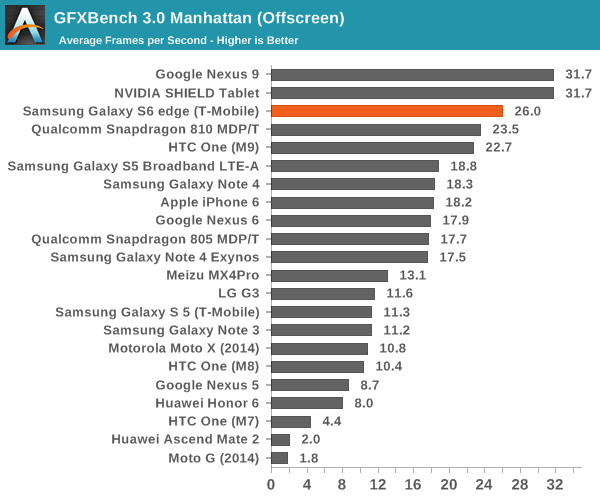
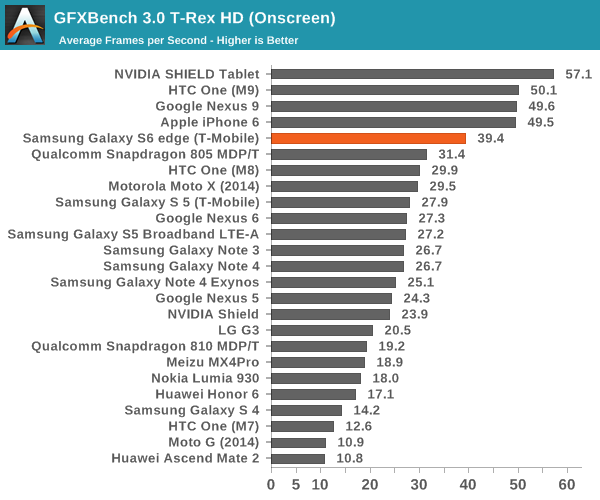
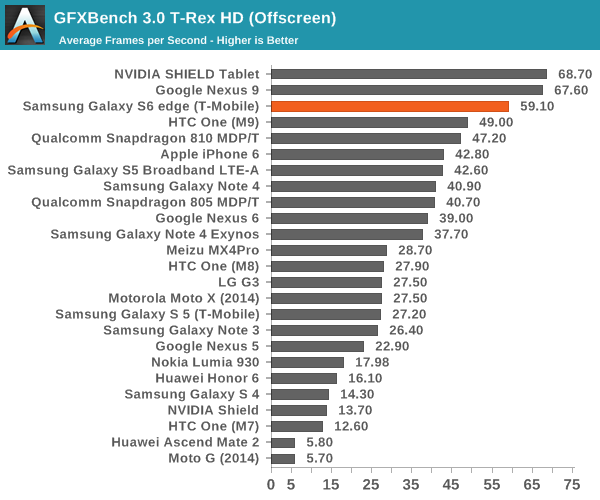
From the results the Mali T760MP8 GPU of the Exynos 7420 performs admirably in comparison to the Adreno 430 of the Snapdragon 810. We see a 10% lead over the Adreno 430 in Manhattan, growing to 20% in T-Rex. Qualcomm hinted that the Adreno 430 is more strongly improved in ALU performance over the Adreno 420, which would explain why the gap isn't as significant this generation. A 700 MHz clock on the Adreno 430 would likely equal to T760 in this case, but I suspect the power consumption of such a clock would be untenable. The Galaxy S6 does fall behind on the on-screen benchmarks due to the 1440p display compared to the 1080p display of the One M9, but rendering at a lower resolution would avoid most of these problems in real games.
Display
As previously discussed, the Galaxy S6 line introduces a newer generation of AMOLED displays, which is said to increase maximum luminance to 600 nits. Samsung claims that this was achieved with the use of new materials, which is likely necessary in order to sustain power efficiency improvements. It doesn't seem that AMOLED is uniquely suited to high resolution, but rather that Samsung Display Corp. is managing to dramatically improve how they make AMOLED displays with every year that offset power consumption increases from higher resolution displays. To find out how Samsung did, we use SpectraCal's CalMAN 5 Ultimate, in addition to X-Rite's i1Pro2 Basic to characterize displays as accurately as possible.
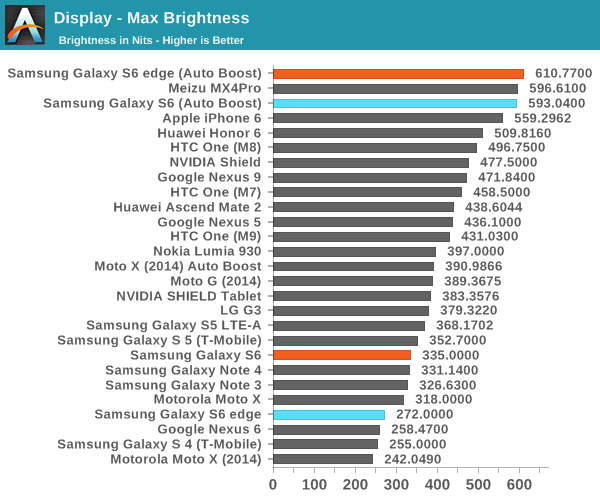
From the results Samsung's claims of a 600 nit display are valid in this case, which is a 100% APL white display. It's important to note that achieving this requires the use of auto-brightness, and that manual brightness is limited to a much lower brightness to reduce power usage, here the S6 sees similar maximum brightness as the S5. The S6 edge disappointingly only achieves 272 nits in this mode, a rather low value. I saw color balance shift dramatically in auto-boost mode, which suggests that this operating mode is likely less efficient than manual brightness. As an explanation, we've seen that colors are controlled in AMOLED by voltage while brightness is controlled by PWM (pulse width modulation). As with most recent AMOLED displays, there's no DC bias to the pixels so the contrast really is infinite instead of just a very large number when displaying black.
Galaxy S6
Galaxy S6 edge
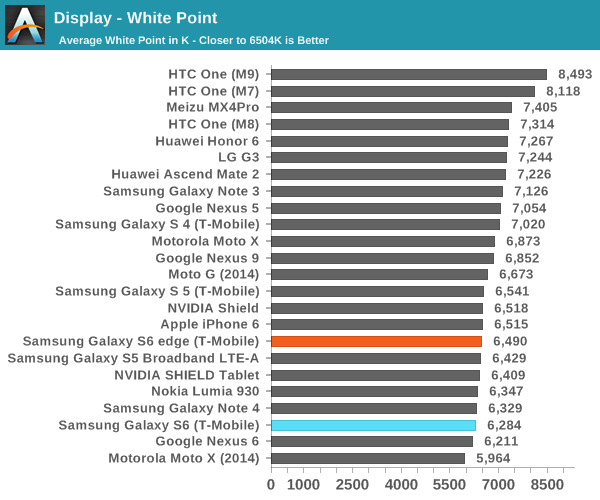
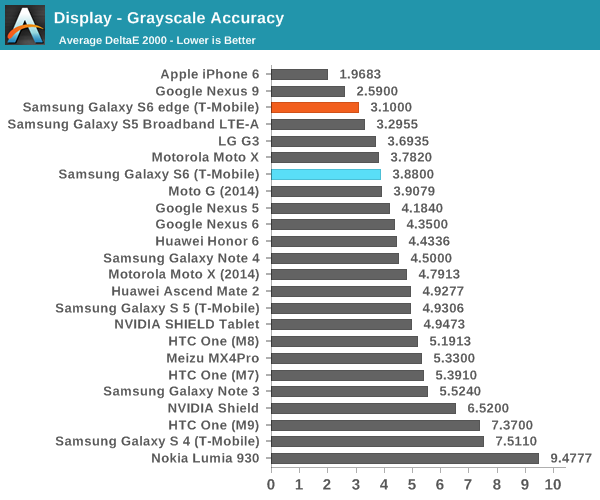
Moving on to grayscale, we can see that Samsung has done a pretty good job of controlling the white point and gamma across the saturation sweep, even if green is slightly dominant in both displays. We can also see that there is variation across displays as the S6 edge is closer to neutral while the S6 sample tends a bit warmer.
Galaxy S6
Galaxy S6 Edge
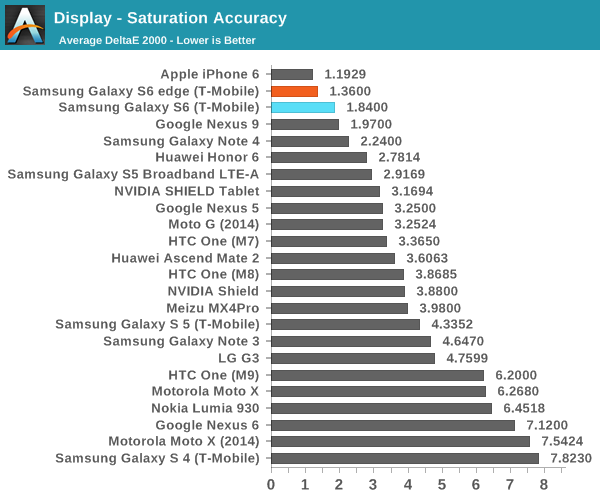
In the saturation sweep, both displays do an incredible job. I really don't have anything else to say here, because there's really no way to improve on the level of calibration Samsung has done on this display. Unless Samsung calibrates every single display in production, which is wildly impractical and effectively impossible to do, this is as good as it gets for a mass-produced device. Improving past this point will also be incredibly difficult to perceive, which means there's no real reason to go any further.
Galaxy S6
Galaxy S6 edge
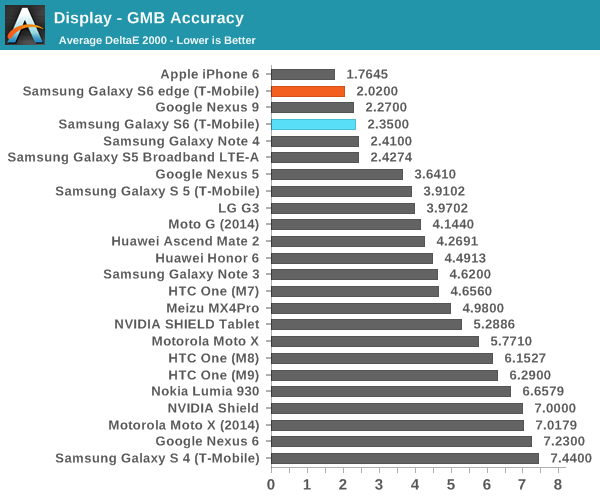
In the Gretag MacBeth ColorChecker, we can get an idea for overall color accuracy, which paints a picture similar to the saturation test. The only real problem I've noticed with these displays are the viewing angles, which can produce color shifting when the display is tilted. This is a bit of an issue on the edge variant as I can see that the edges of the display appear somewhat green when viewed head on, but otherwise there are no real issues to be seen here. Overall, this is probably the best display anyone will be able to get in a smartphone right now. This level of progress is amazing from Samsung, given just how bad things were with the Galaxy S' AMOLED display, even as recent as the display of the Galaxy S4. With the Galaxy S5 review, I said that I wouldn't be surprised to see AMOLED equal, if not exceed LCD within a year or two, and Samsung has managed to finally hit that mark.



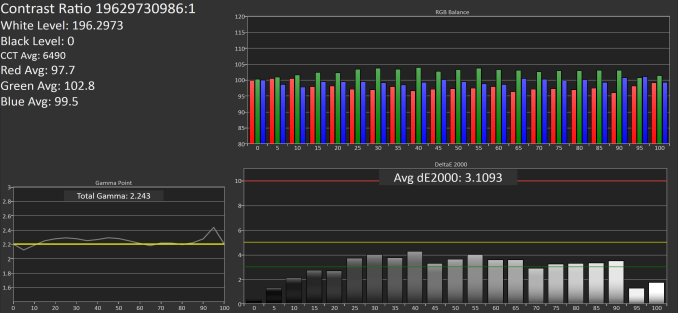
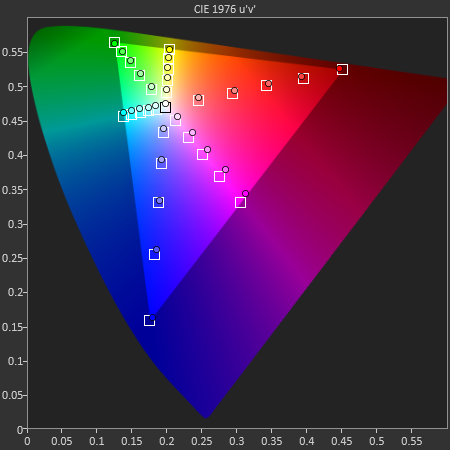
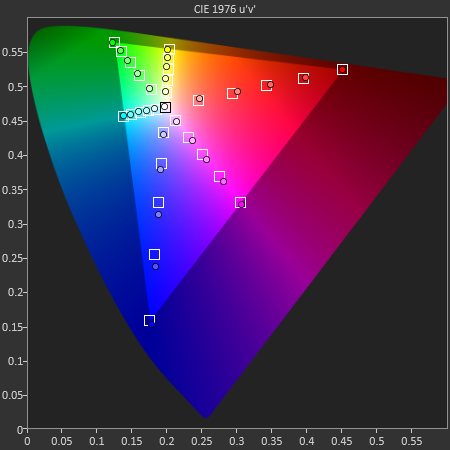
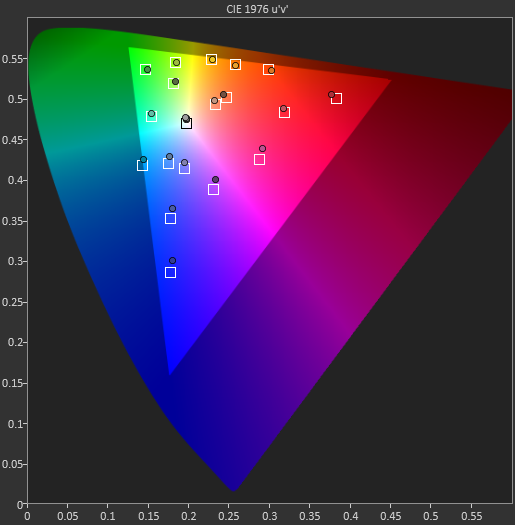









200 Comments
View All Comments
mkozakewich - Thursday, March 26, 2015 - link
For most things, like games, they'll be running on a reduced resolution. You can expect high performance, then.makxon - Friday, March 27, 2015 - link
this! ya, a lot people just don't understandmelgross - Thursday, March 26, 2015 - link
A major problem with OLEDs which wasn't mentioned in the article, is that because of brightness issues, and yes, this display has them as well, they need that Pentile array to raise the brightness. But the Pentile display lowers resolution by about 30%. So they then need to raise resolution to make up for it. So a 1440 display isn't much sharper, in real world use, than a 1080 display.As far as why they don't allow that super brightness in manual use is not just because of battery use, but because of display heat. If they allow that to be used all the time, the display life, which is directly dependent on the heat generated, will be considerably shortened. It's also likely that the different colors have differing maximum brightness levels, so it can't be balanced at that high a level.
This are problems OLED manufacturers have been having from the beginning.
I would say that this is one of the best smartphone displays out there, but not THE best.
makxon - Friday, March 27, 2015 - link
no need to get humble, super amoled is the best display on any smartphone period.superflex - Friday, March 27, 2015 - link
Paid shill warning.TrojMacReady - Friday, March 27, 2015 - link
Lots of assumptions. Yes, LED life shortens with higher temperatures, but we don't know the temperatures, nor the current life expectancy (which has improved several times over the past years). And even without auto boost, visibility is great, not in the least thanks to a relatively low reflectivity. *Without* the boost, it's still much easier to read in high ambient lighting than the HTC M9 and no worse than an iPhone 6 (Plus), if not slightly better.Meaning, auto boost is actually a bonus beyond that.
TrojMacReady - Friday, March 27, 2015 - link
The GPU performance is great (class leading for phones) if you set it to your desired resolution (balance quality vs framerates) for the applications used.mkozakewich - Thursday, March 26, 2015 - link
This just requires better customer support from Samsung. They need to replace batteries that have lost significant health in less than two years.The other thing would be to post reminders that reducing the battery below 20% can damage it (conservatively speaking, of course.) I'd like to see them shut down the phone at 10%.
jbm - Thursday, March 26, 2015 - link
Yes, especially since on my two Android phones so far (S4 / S4 mini), I had nothing but a horrible experience with battery life. By that, I mean that the battery life is WILDLY INCONSISTENT even when doing the EXACT SAME things. I do not use my phone much. I do not play games on it, I do not watch videos or listen to music. I just use it as a phone (not many calls per day, mainly SMS and checking of mails). I always have the "power saving" mode active. Still, when doing the exact same things (leaving for work at 7am, putting the phone on the desk at work, going home at 5pm), on one day the phone is still at 90% battery when I leave work (about 1% per hour), on the next day it is only at 60%. When I got my S4 mini, I tried out the battery life and got nearly 3 days out of it. Then I charged it up, and the next day it went from full to 40% in one day. How can this be possible? What madness is this? All I can guess it that some system processes just go bonkers at random (the main battery usage according to the list always is "phone in standby"). I got a second battery together with a separate battery charger, and one thing I noticed is that when I power off the phone in the morning, take out the battery and replace it with the charged one (as opposed to actually charging the phone itself via USB cable and leaving the battery in), I never get the "mega battery drain".Oh, and on the S4 which I had before the S4 mini, the battery went dead within one year (the phone would turn itself off within 1-2 minutes after powering on).
Well, now enter the S6 without a replaceable battery. No, thanks. No Samsung for me anymore, and also no Android by anybody else.
Darkito - Thursday, March 26, 2015 - link
If your phone is rooted, download the BetterBatteryStats app. Some process is causing a wakelock and most of the time you just need to get rid of some offending app. I had an app that simulated Moto's Active Display and it was destroying battery life and not showing up in the regular battery stats screen.